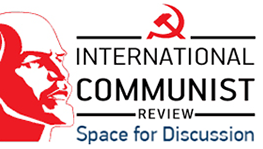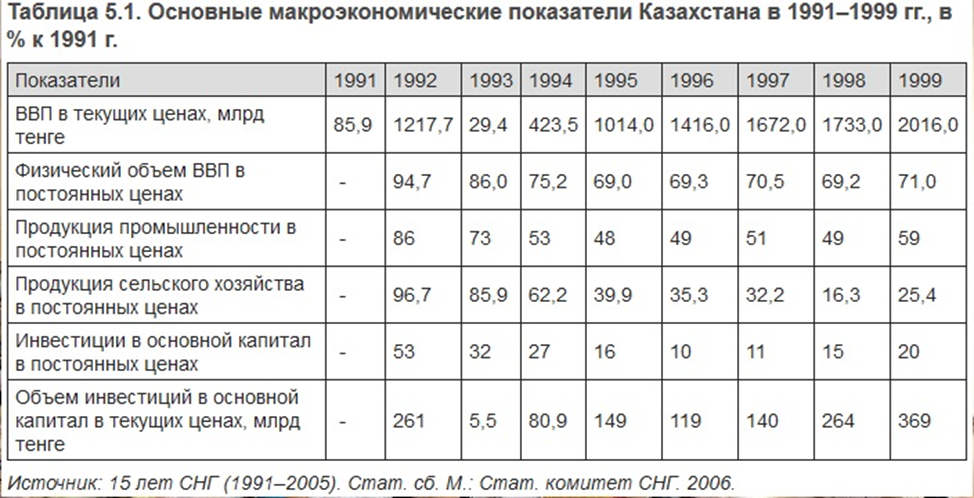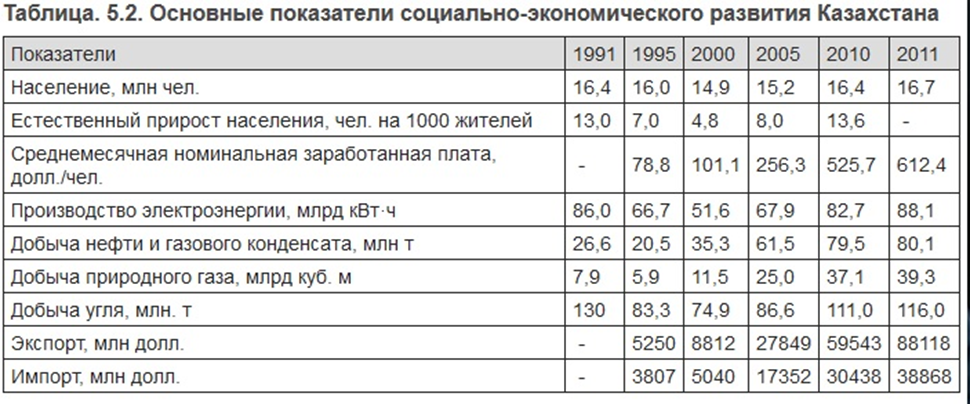Indeed, looking back, we can apply to this strike such epithets as — heroic or great, as it is the first time really shook the foundations of the current system in Kazakhstan, established after the destruction of the USSR and raised issues of property and power. Since 2009, workers in different regions have demanded the nationalization of production on their strikes, but it is in the Mangystau region that this requirement has passed through the entire strike from beginning to end.
The collectives have languished and continue to languish under the oppression of foreign capital, which is barbaric and predatory pumping out of the bowels of unaccounted millions of tons of oil, gas and minerals. At the same time, after numerous optimizations, production rates increased significantly, and wages fell due to fines and non-fulfillment of plans, and the workers themselves were forced to work on outdated and worn-out Soviet or Chinese equipment. Occupational diseases and the death of workers in the workplace have become the norm.
This is especially true of Chinese companies and managers that have held sway in the branches of the supposedly national company "KazMunayGas", in particular in JSC "MangistauMunaiGas", JSC "Karazhanbasmunaigaz", PF "Ozenmunaygaz" and others. Especially strongly from numerous optimizations and transformations workers of the auxiliary enterprises suffered then and suffer now. They were removed from primary production and transformed into allegedly self-service too. As in 2011, it is the workers of these repair and drilling companies that are now at the forefront of the struggle of oil workers, seeking the nationalization of their enterprises under the control of labor collectives.
Another important point was and remains the struggle for trade unions. Therefore, the requirement of freedom of Association has become one of the most important, and, in fact, since it began the strike in the oil fields and enterprises of JSC "Karazhanbasmunaigaz". The standoff began when Chinese managers led by Yuan Mu did not recognize the results of the extraordinary reporting and election conference in March 2011, at which workers removed from the post of Chairman of the employer's protege.
Security companies have locked up the office, cash and documents of the trade Union of JSC "Karazhanbasmunai", and members of the trade Union began armed attacks by hired gangs. As it became clear, bandits were connected with officials of regional administration and through beating and threats of use of firearms directly in the territory of carefully protected crafts (!) demanded that members of the trade Union to abandon the results of the conference.
In response, the shift teams from April began to declare mass hunger strikes in the fields with the requirement to immediately stop the terror against their comrades, one of whom burned the house. Since May 9, all the enterprises of JSC "Karazhanbasmunaigas" began an indefinite strike, which in two weeks spread to the enterprises of PF "OzenMunaiGas", where they immediately put forward the requirement of nationalization not only of service companies, but also of the entire mining industry of the country.
Of course, at first the battle started because of non-payment of coefficients and around the requirements of changing the system of remuneration, but with the increasing repression and attempts to set on the striking state employees the contents of the strike is sharply politicized. The catalyst for this was the arrest at the end of May of the lawyer of the trade Union of JSC "Karazhanbasmunaygas" Natalia Sokolova at the request of the Chinese Manager Yuan Mu, when she was accused of organizing "illegal trade Union meetings" and "inciting social discord". A week later, the leader of the workers of PF "OzenMunaiGas" Akzhanat Aminov was arrested on the same charges.
After a series of layoffs of activists, the strikers initiated a mass exit from the ruling party "Nur-Otan", where they were recorded by the administration of enterprises, as well as put forward a demand to increase wages to teachers and doctors of Zhanaozen by 60% and the immediate release of their arrested leaders. Then formed several permanent places of Assembly workers is the bus station in Aktau (regional capital), then the area of the office of JSC "Karazhanbasmunaigaz" in the same Aktau, as well as companies in the fields of PF "Ozenmunaygaz", where he continued an indefinite hunger strike. In the subsequent since July the main mass daily meetings proceeded already on the Central square of the city of Zhanaozen which is in 100 kilometers from the regional center.
In General, this strike lasted almost eight months, and it was able to hold out for so long only because it received the support of the local population, the workers of neighboring labor collectives, who constantly collected funds for the Fund of the strikers. Despite the fact that terror was unleashed against the workers ' leaders, which killed two people in the summer of 2011, many were beaten and wounded, the houses of several members of the trade Union Committee of the PF "OzenMunaiGas" were burned, the tent camp of the hungry on the territory of this company was destroyed by the police, the strike not only did not stop, but also received new impulses.
In this situation, it was obvious that at the international level and in the CIS, the strikers are supported exclusively by Communist and left-wing parties and organizations, and it was surprising to observe the absolute silence of international trade Union centers and even the leaders of the KTR against such a mass strike in Western Kazakhstan. It is possible that this has played a role lobby oil companies, when in the depths of trade Union officials of the same International Confederation of trade Unions (ITUC), striking workers tried to present in the form of some "extremists" and "Maoists".
The fact that the workers were able to continue the struggle in the situation of arrest of the leaders, put forward from their environment the second wave of leaders, on the contrary speaks of a serious class basis of the entire movement. Workers and local residents did not allow the authorities to try to divide people on ethnic grounds and the principle of settlement, as employers accused of instigating strikes oralmans, immigrants from neighboring republics.
The final turning point in the mood of the striking workers took place in October — November, among which the supporters of self-organization and independent participation in the political struggle, who supported the political program of SMK and the trade Union "Zhanartu", prevailed. In November, a new single working Committee was formed in Zhanaozen at a meeting of strikers and representatives of all neighboring fields and enterprises of the region, which led a completely different course.
Immediately at the meeting, an appeal was adopted to the workers of other extractive industries and regions to support their strike, the idea of creating a new unified Federation of class trade unions independent of employers and authorities, the formation of their own political party was put forward, distrust was expressed to all existing political parties at that time and a boycott of the parliamentary elections, which were to be held on January 15, 2012.
There was an attempt to nominate independent candidates for elections to local maslikhats from among the striking oilmen, who simply were not allowed to participate in the campaign. Several types of leaflets were issued, numerous ballots of socialists and other literature were distributed. It was established cooperation with the workers of all fields and enterprises of the region. Own press-service is created.
After the formation of the Committee, a month before the execution, an extended Skype conference of representatives of the working Committee with the participation of left and trade Union groups from other regions of the country was held, where the issue of holding a rally on December 16 with demands to the government and calling for an expansion of the strike was discussed. The subsequent draft resolution included a call for a General political strike demanding the resignation of the President and the government.
On the same day, pickets and solidarity actions were planned in different countries of the world, as well as representatives of the working Committee were sent to neighboring regions. The only thing that many could not imagine that the authorities are able and willing to go to the shooting of unarmed oil workers, ordinary residents of the city and young people who came to support the strikers. Although in October-November 2011, the interior Ministry and the Ministry of defense of Kazakhstan have already conducted" antiterrorist " exercises in the region, which was already preparing for the massacre.
As a result, on December 16-17, an oil strike and a mass movement in support of it among the local population was drowned in blood by the open shooting of protesters, mass arrests of activists, the introduction of special forces police and marine brigade of the Ministry of defense, fully equipped with American weapons and prepared by advisers from the Pentagon. This was a manifestation of open terror on the part of the bourgeois dictatorship.
Despite the shooting, scheduled a General strike gripped the entire area and lasted up to 5 days. The railroad station of Shetpe in the night of 17 December in protest against the shooting blocked traffic, causing themselves were shot at by Riot police. As a result of what according to official data one firefighter who passed to the party of protesters was lost. Few people write, but the day after the execution on December 17, on Alan (square) in Zhanaozen came five thousand people, not afraid of a new execution and arrests.
Oil workers of Zhanaozen by their form of self-organization in the working Committee, discipline, developed program of requirements and actions, call for a General political strike, showed an example and the way in which all workers of Kazakhstan should move. It is the capital and class experience gained working-class movement of the country, and you would like to use and to implement, when the newly Mature social and political crisis.
The revolutionary significance of the work performance in the Mangystau region is difficult to overestimate, it has become a model and an example and for the first time formulated the political objectives of the entire working movement of Kazakhstan. Zhanaozen became a prototype of the future Kazakhstan revolution. The strike also gave an unprecedented impetus to the working performances, even after the shooting, which was another proof of the fracture of consciousness of workers. So in May 2012, no less dramatic with the seizure strikes were the miners of the Corporation "Kazakhmys", who achieved a wage increase of 100 percent!


